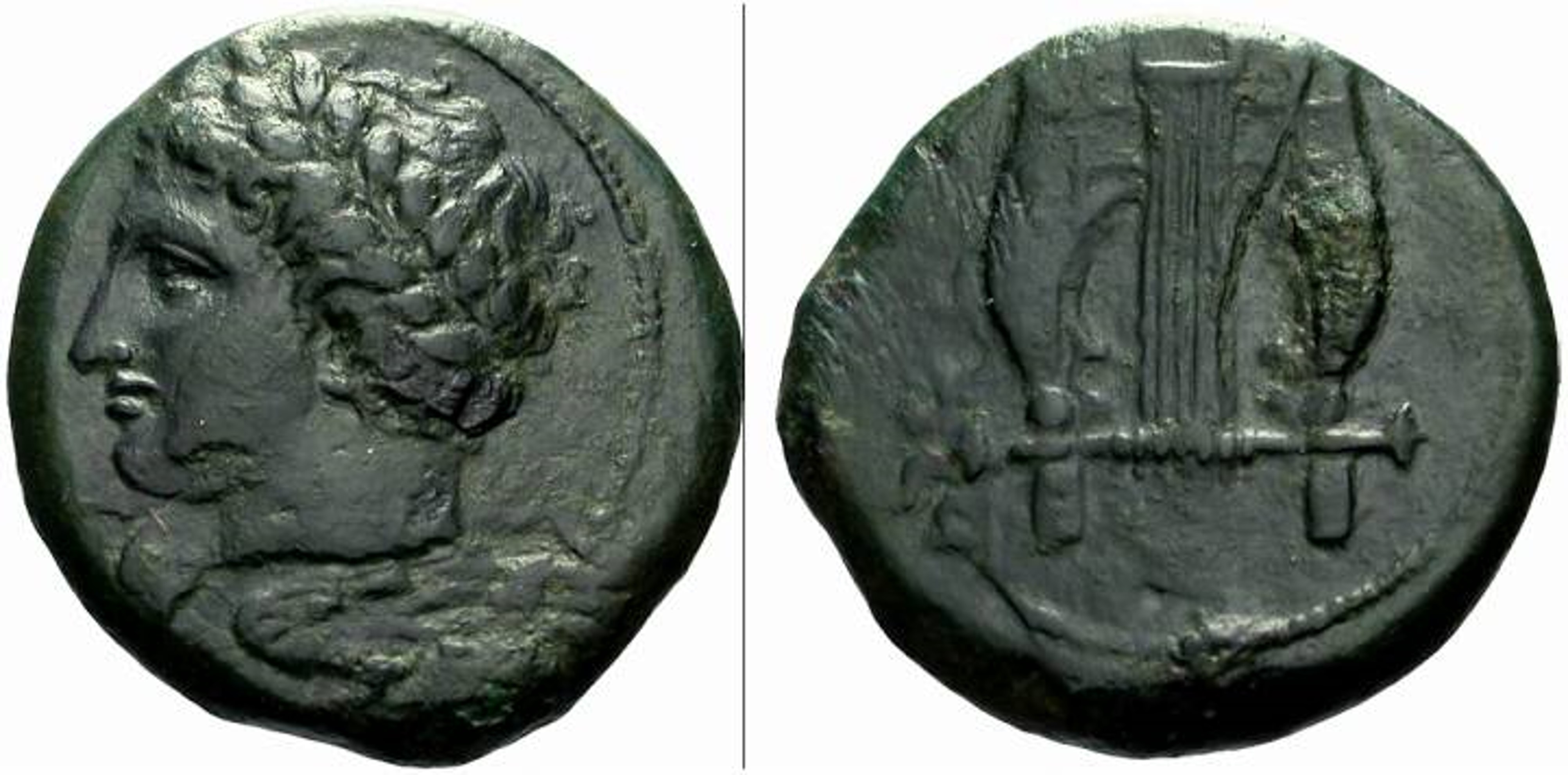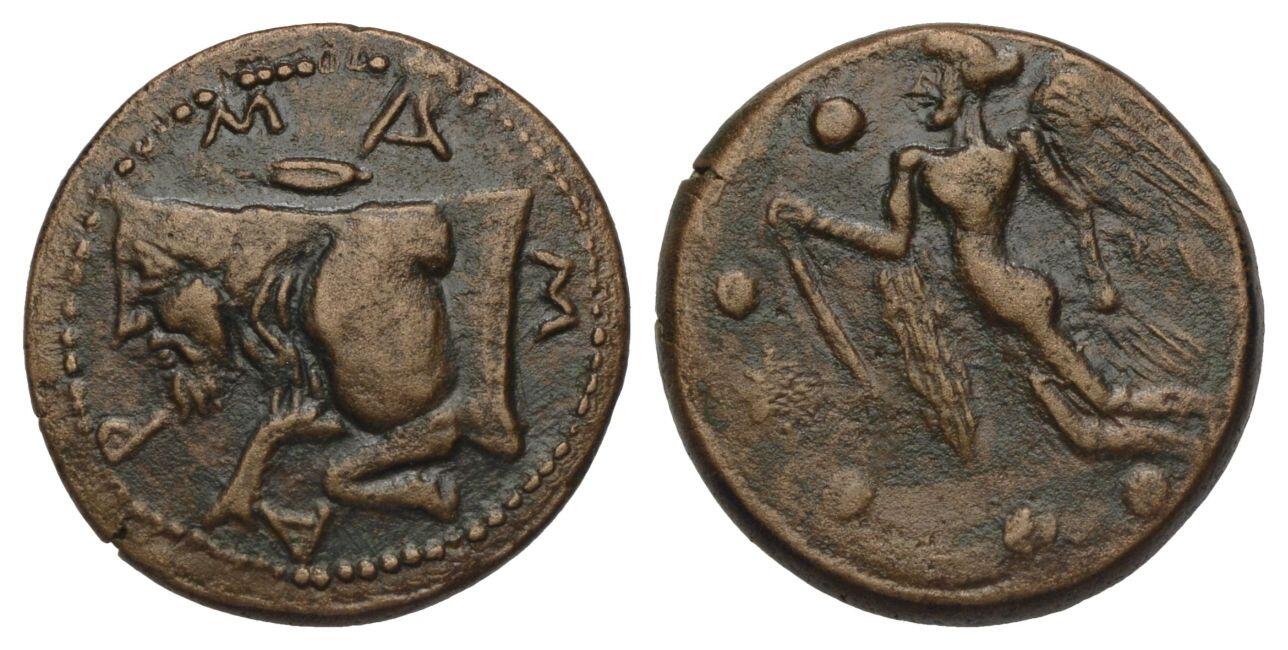352 BCE - 344 BCE | ΑΔΡΑΝIΤΑΝ
|
|
Sale(s)Sale(s) ᵖ:
|
Numismatica Ars Classica, 27, 12 May 2004, 71
|
|
|
|
Description
| ObverseInscription or printing placed on the obverse.:
|
Head of Apollo left, wearing laurel wreath, within linear border.
|
ReverseInscription or printing placed on the reverse.:
|
ΑΔΡΑΝIΤΑΝ (Greek) Cithara within linear border.
|
Mint and issuing power
| MintIdentifies the place of manufacture or issue of a numismatic object.:
|
Adranum
|
Ancient regionAncient region.
|
Sicily
|
Modern countryModern country: Italy
|
AuthorityIdentifies the issuing power. The authority can be "pretended" when the name or the portrait of X is on the coin but he/she was not the issuing power. It can also be "uncertain" when there is no mention of X on the coin but he/she was the issuing power according to the historical sources:
|
Campanian mercenaries
|
Chronology
| FromIdentifies the initial date in a range assigned in a numismatic context. 352 BCE toIdentifies the final date in a range assigned in a numismatic context.. 344 BCE
|
Classical 480-323 BC  periodTime period of the numismatic object. periodTime period of the numismatic object.
|
Physical description
MetalThe physical material (usually metal) from which an object is made.: Bronze 
|
WeightWeight of the numismatic object (in grams). in grams: 7.497.49 g <br />7,490 mg <br />
|
DenominationTerm indicating the value of a numismatic object. Examples: tetradrachm, chalkous, denarius.: litra 
|
|
| DiameterDescribes diameter of an object (in mm).: 2222 mm <br />2.2 cm <br />
|
|
References
Description
| ObverseInscription or printing placed on the obverse.:
|
MA - M - A - P (Greek) Forepart of man-headed bull l.
|
ReverseInscription or printing placed on the reverse.:
|
Nike l. surrounded by six pellets
|
Mint and issuing power
Chronology
| FromIdentifies the initial date in a range assigned in a numismatic context. 409 BCE toIdentifies the final date in a range assigned in a numismatic context.. 403 BCE
|
Classical 480-323 BC  periodTime period of the numismatic object. periodTime period of the numismatic object.
|
Physical description
References
References
- ^ Hoover, Oliver D. (2012), The Handbook of Greek Coinage Series. 2. Handbook of the Coins of Sicily (Including Lipara). Civic, Royal, Siculo-Punic, and Romano-Sicilian Issues. Sixth to First Centuries BC, Lancaster-London, 489 p.

